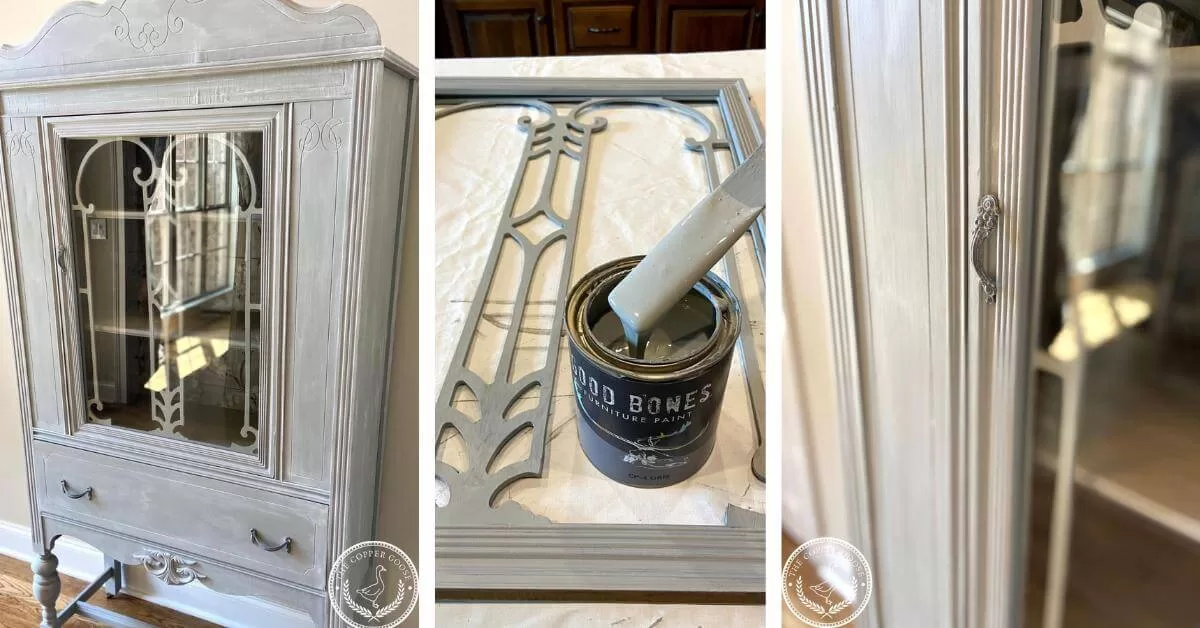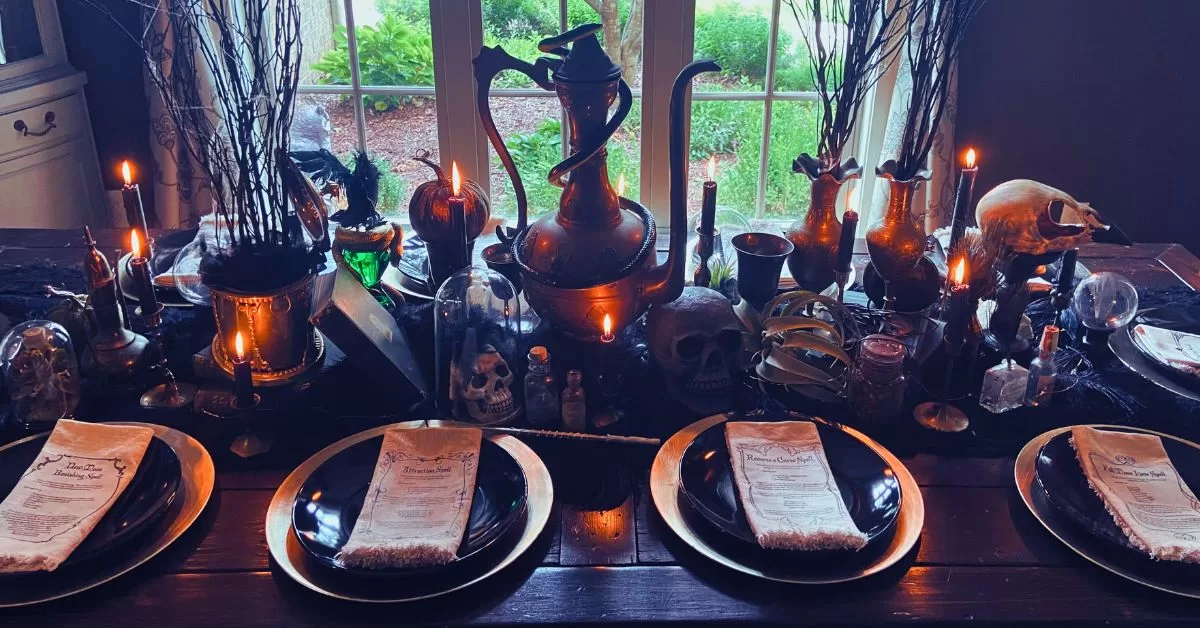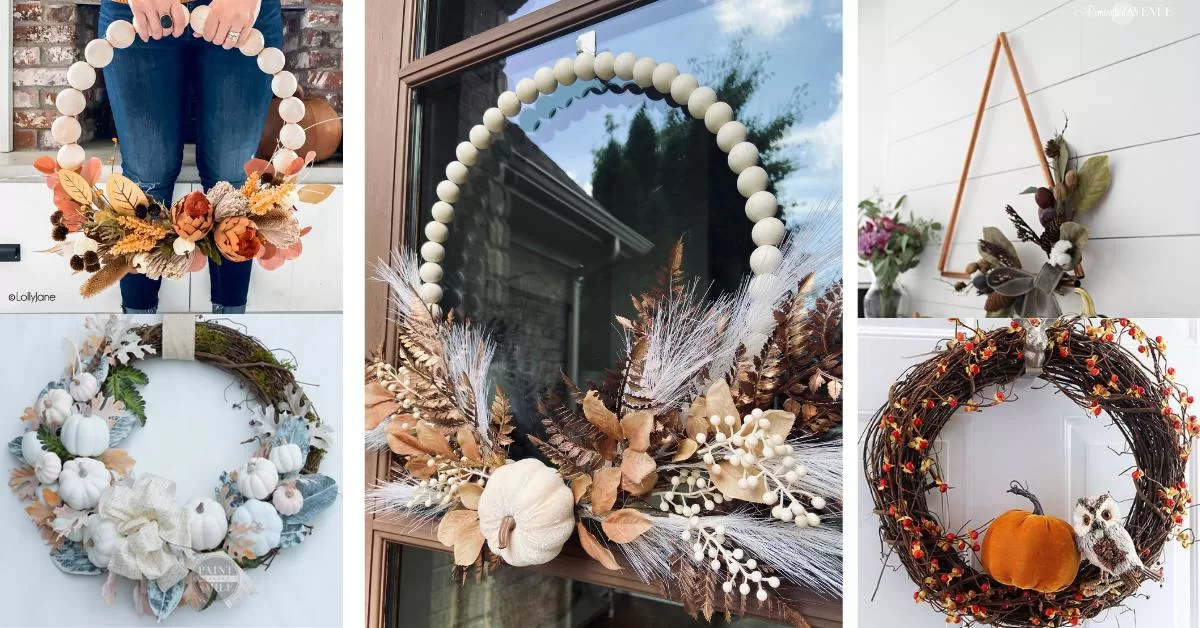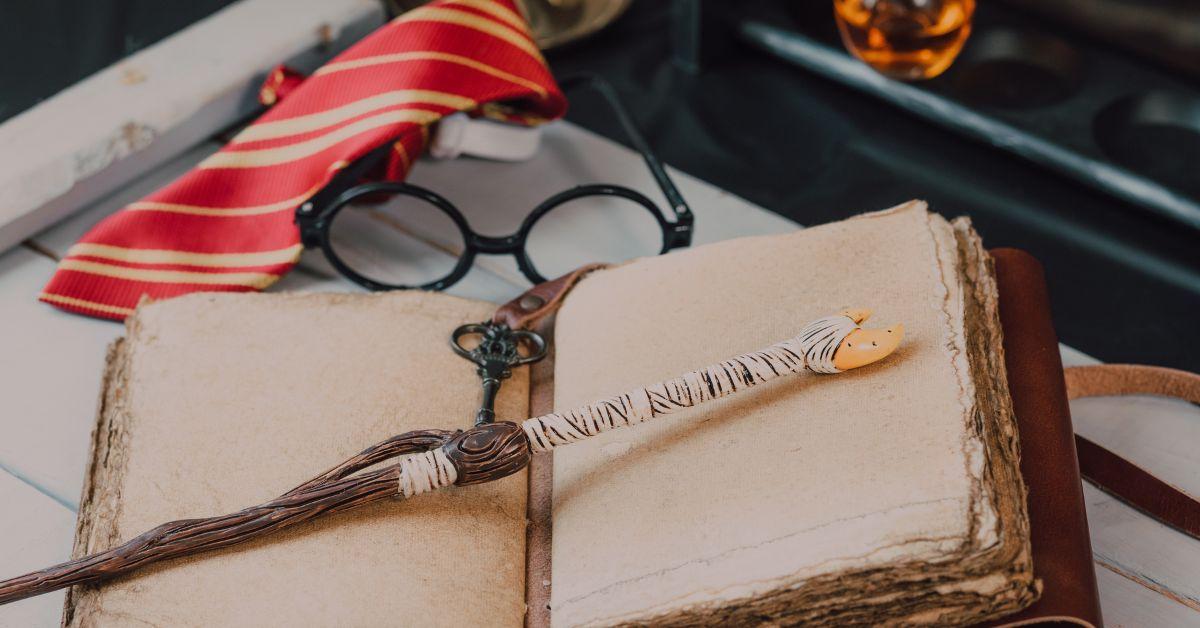A vintage china cabinet can add character and style to your living space as well as functional storage. This depression-era cabinet came to me with cracked glass and warped veneer, but was still salvageable! Here’s how I made repairs and gave the exterior a gray-limewash finish…

{This article may contain affiliate links to products I know and love. As an Amazon Associate, I earn from qualifying purchases at no extra cost to you. See my full disclosure policy here.}
VINTAGE CHINA CABINET: THE BEFORE
Battered.
That’s the word I’d use to describe this piece when it came to me. The glass door was shattered and unhinged and the decorative molding had split. The side of the cabinet had chunks of veneer missing and the outer layer of the top of the cabinet was warped, likely from moisture. The drawer face had come apart from the rest of the compartment.

It was dirty. And musty. It was in bad shape, likely to be seen as garbage by the average Joe.
So, naturally, I fell in love with it!
I mean, it was beaten up, but it was a depression-era cabinet with art nouveau style engravings (think flowing, curved, organic lines) and all of the hardware was intact.
So began the tedious journey of not only repairing the cabinet itself but also giving it a facelift with paint and limewash.
SOURCE LIST
Here’s a quick list of the materials that I’ll reference in this makeover in case you’re interested:
- Minwax High Performance Wood Filler
- Good Bones Paint in “Gris”
- Valspar Limewash Glaze
- Boar bristle paintbrush
REPAIRING THE VINTAGE CHINA CABINET
This cabinet makeover was quite a bit more labor-intensive than most pieces I take on.
First off, I repaired the peeling veneer – some of which had chunks missing – on the side of the cabinet. I used wood glue and clamps to press down the strips that were separating and then went over the whole thing with Minwax premium wood filler. While I had the wood filler out, I went ahead and filled in any deep scratches or chunks missing from the rest of the piece. After it dried, I sanded it down for a smooth, even finish.


Next, I removed the whole outer layer of veneer from the top of the cabinet. It had water damage and was not salvageable, and since it couldn’t be seen anyway at the top of the piece, it was best to just remove it. I used a heat gun and putty scraper for this (heat guns require a little patience but they do eventually loosen the adhesive to make scraping it off easier).
The drawer was an easy fix after I realigned the joints and reinforced them with wood glue.

Finally came the glass door. My local glass-and-mirror shop cut another glass pane after I called them with the dimensions since the original was shattered. The decorative molding on the inside had been ripped on one side, so instead of attempting to fabricate the missing arch from furniture molding, I decided to trim the opposite side so that both bottom arches were removed. This allowed the design to be symmetrical and no one was the wiser about the fact that some of the scrollwork had been removed.
FACELIFT WITH PAINT AND LIMEWASH
Finally – the fun part!
I chose to paint this vintage china cabinet with Good Bones paint in “Gris.” I like Good Bones paint because it doesn’t require a primer or a sealant, which saves a ton of time and money in the furniture-painting world.


You can see my method for painting with Good Bones paint in this post on my Corner Hutch Makeover, but in a nutshell, I gave the cabinet a light sanding and cleaning before applying two coats of paint with a boar bristle brush (chosen for added texture).
Since this cabinet had seen better days, I went with a distressed look and lightly sanded some of the edges and corners to expose the wood beneath. I’m not a fan of heavily distressed furniture – I think it can easily look spotty and overdone, so I recommend keeping a light hand and sparsely distressing areas so that it looks natural.
I found a discounted peel-and-stick wallpaper that matched the neutral gray of the paint perfectly, and added it to the back of the cabinet and bottom of the drawer.



Limewash! This was my first time adding a limewash effect, and I used Valspar’s, Limewash Glaze. It’s not a true limewash technique like you’d see on the brick exterior of a house, but the application was easy and the resulting texture paired well with the rustic, distressed look that I was hoping to give this china cabinet.
VINTAGE CHINA CABINET: THE AFTER
Here’s the final outcome: a limewashed china cabinet in neutral gray with original hardware.



The neutral, distressed paint and textured limewash give it a soft, vintage feel while also hiding the many flaws from damage and age.
Definitely worth the work!







